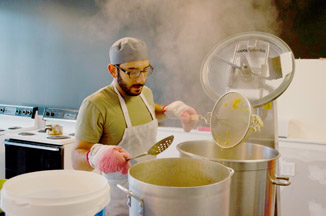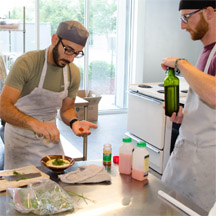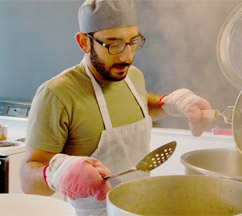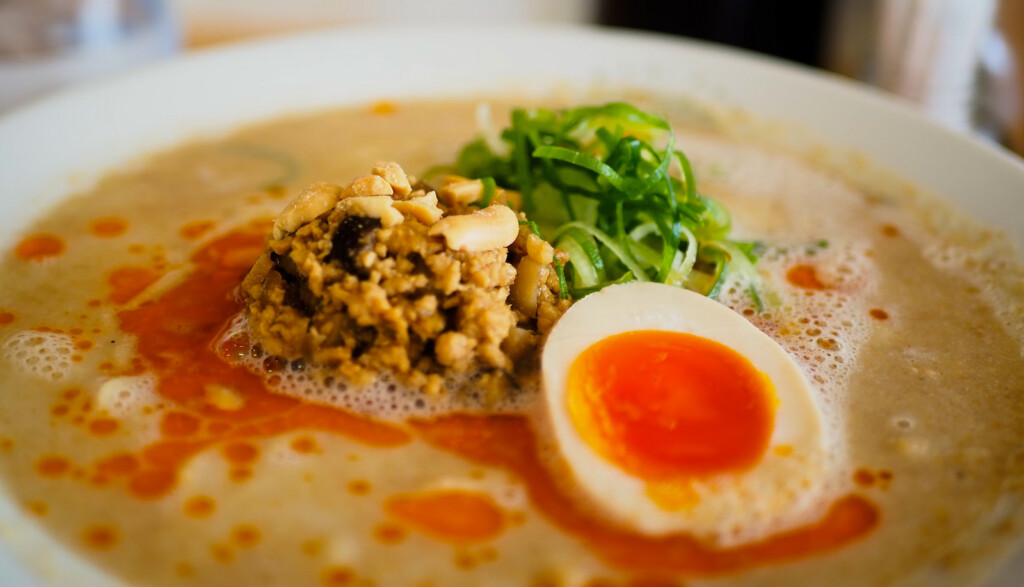
Moudi Sbeity realized when he moved to Utah from Lebanon in 2006 that he wasn’t going to find hummus like his mother used to make. To a Middle Easterner, creamy hummus is a comfort food. Since Mom was a half-world away, Moudi and Derek Kitchen started their company, Laziz, to manufacture and distribute an authentic hummus throughout Utah.
Recipes for hummus date back to a 13th-century Cairo cookbook. The Laziz hummus is a traditional Lebanese blend prepared using no oil. The process starts by soaking dry garbanzo beans for 20 hours and then cooking them for four more hours to extract the skin and fat. Moudi said that people are surprised how creamy the Laziz hummus is despite the lack of oil in the recipe.
The lucky recipients of the first batches of hummus were family and friends. With encouragement, Moudi and Derek took their wares to local farmers markets where they discovered they had a hit. Their line now includes two additional spreads.

Muhammara is a sweet red pepper dip made with pomegranate, molasses and walnuts. “Think of it as a Middle Eastern salsa,” Moudi said. The third entry in the Laziz line is toum. Toum is a garlic spread made from just four ingredients, garlic, lemon, olive oil and sea salt. It can be used as a sandwich spread, in sauces and dressings, and in cooking grilled salmon or steaks.
Laziz products are now offered at local farmers markets and grocery stores. You can find the spreads in the cheese section of Harmons, Caputo’s, and the Community Co-op. They are currently looking to expand to Southern Utah and beyond.
For Moudi it is not just about selling products, but about educating the public regarding the importance of ethnic foods and what they can be used for. “The best way to understand a culture is through food. “ Moudi added that he would like to see “a culinary dynamic created between Western food and Middle Eastern foods.” Mystery gives way to understanding and everyone wins.






